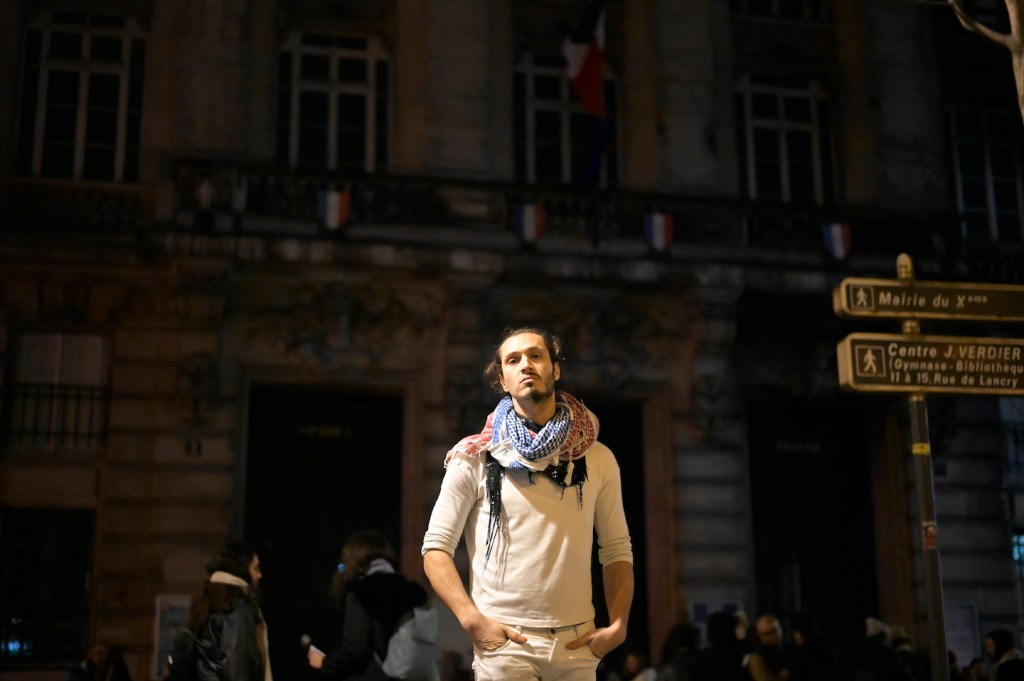
Russian romance. Photos courtesy of Damian Siqueiros.
As you’ve probably already gathered from being an informed human being—and from our brand new documentary “Young and Gay in Putin’s Russia”—the LGBT community in Russia is currently the victim of governmentally institutionalized discrimination. Russian parliament recently took its disregard for human rights and Amnesty International to a whole new level by passing and proposing a number of homophobic federal laws. These bills have sparked further violence and international uproar in an already chaotic Russian social climate.
Videos by VICE
Damian Siqueros, a Montreal-based artist and self-proclaimed ‘photopainter’ is taking a more visual, subtle approach to the issue. In a project titled To Russia with Love, Damian depicts the love between gay historic Russian icons and their partners in a series of controversial and stylized photographs. The portraits capture the historical figures in moments of vulnerability and affection in front of a backdrop of traditional Russian artifacts and symbols. Rather than fighting hate with hate, Damian is using his art to raise awareness and trying to inspire discussion about LGBT rights in Russia.
With the 2014 Olympics in Sochi approaching, I wanted to know more about Damian’s project and his thoughts on Russia. I reached out to him recently over the phone to talk about his art, gay athletes, and the struggle of LGBT people around the world.
VICE: Describe To Russia with Love as a project, in your own words
Damian: I wanted to approach the situation in Russia through art. I portrayed famous gay Russian icons and the very real love they had for each other. I chose famous icons partly because the project had to be approachable and emotionally accessible to the public. I also focused not on the negative but the positive—on the love between these couples. Despite their fame, I’ve captured their humanity. It’s not Tchaikovsky the genius but the loving, gay man. That gayness in some ways informed his work and enriched his work, and it’s not something that should be ignored.

What was the project’s main inspiration?
The straw that broke the camel’s back was the fact that Russian parliament wanted to pass the law where they take away the children of gay couples. When you’re oppressing children it’s unfair because they’re not able to protect themselves. The events in Russia are a warning, an alarm. Despite our progress, we shouldn’t get too comfortable. We’re living in a time now where the progress we have made is being contested.
What is the project’s connection to the upcoming Olympics?
Russia will be in the centre of attention for a few days and its pertinent to talk about these issues around this time. The question right now: what will happen with openly gay Olympic athletes? The best thing competing athletes can do is what Jesse Owens did, which is to silence critics with his success. He defied Hitler’s regime with that. If the gay athletes do the same in Russia, I think it’s the best way they can protest.
Tell me about the tableau with the Putin and Stalin masks.
The two of them have been the most repressive in recent history in terms of gay rights. There’s a parallel between the two with regards to their approach to gay rights and the way they present themselves to the public. The tableau represents a paradox by representing a loving gay couple in distress under the new laws, portraying the two Russian rulers that have been the most abrasive towards the LGBT community.
How do you expect the project to be received?
It’s going to be polarizing. The choir will be happy, and homophobes will condemn it. The Putin and Stalin portrait will be the most controversial but I don’t know how the public will react. Hopefully it will do well, but I don’t think there will be a huge backlash to the photos.

How do you think this project will be received, both here and abroad?
For much of the audience I will be preaching to the choir. The LGBT community will probably see these pictures and like them. But hopefully a few homophobes or people in the balance will see some beauty—recognize some part of themselves in the couples. Hopefully they see that they don’t have to hate gay people.
Do you think projects like yours will help break the cycle of violence and hate in Russia?
If I see it from a naive point of view, yes. I wish that I could contribute in any way to that goal. I don’t think I can change everything but if I can provoke some controversy and some conversation then it’s a start. Visible change would be even better. For me, fighting hate with hate doesn’t make sense. If I show in my pictures that love is the same for all people, maybe homophobic people in Russia will actually change their minds.
For more information (and to see more photographs from the series), visit Damian’s website.




